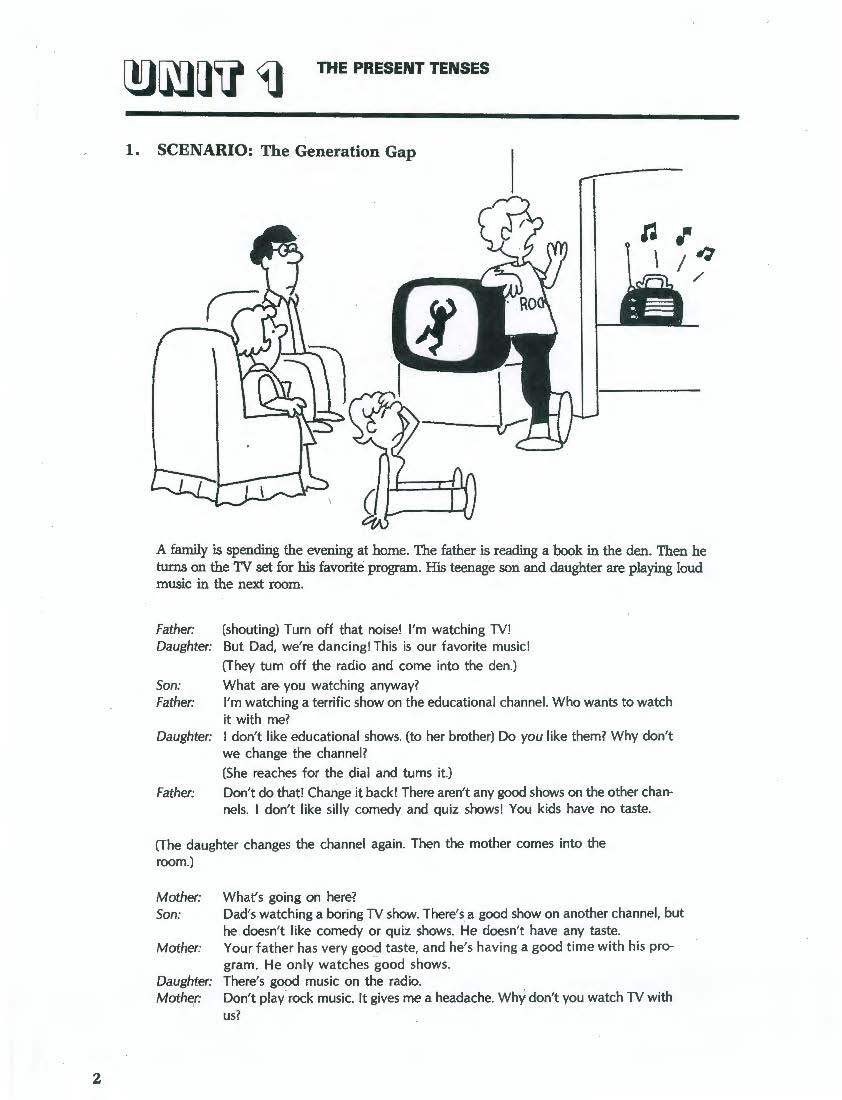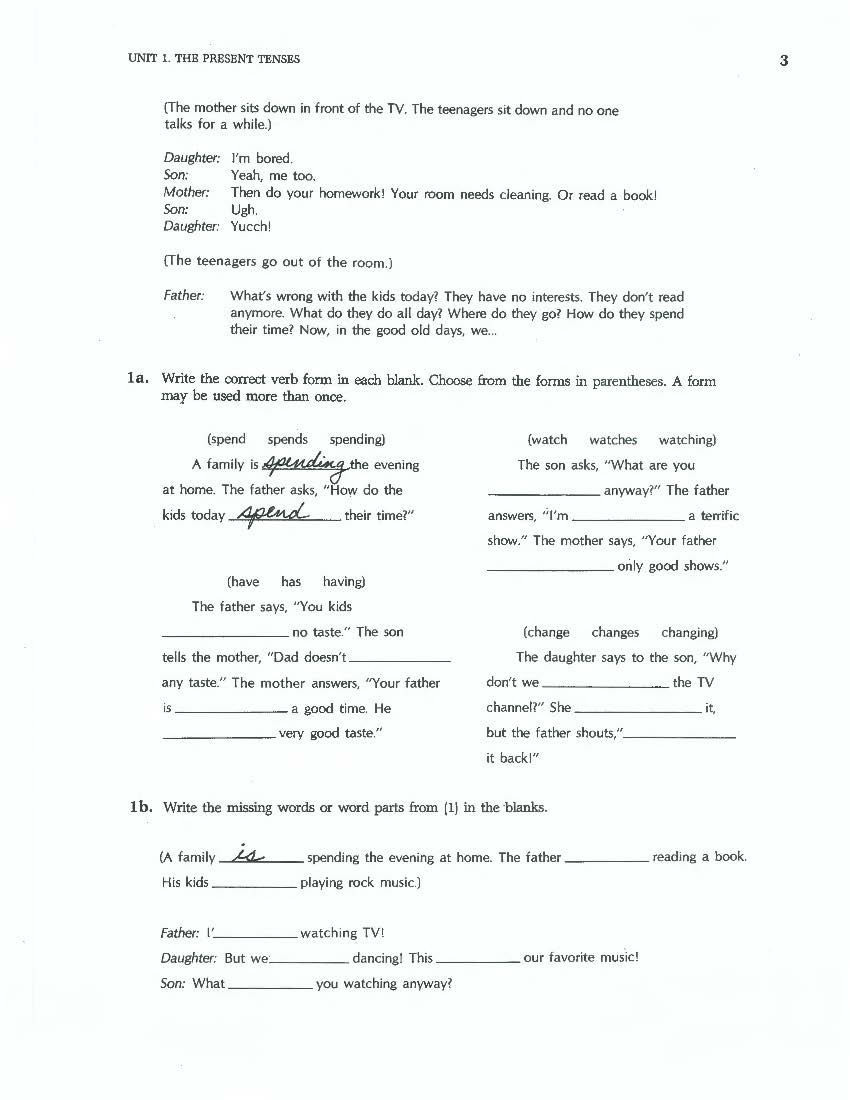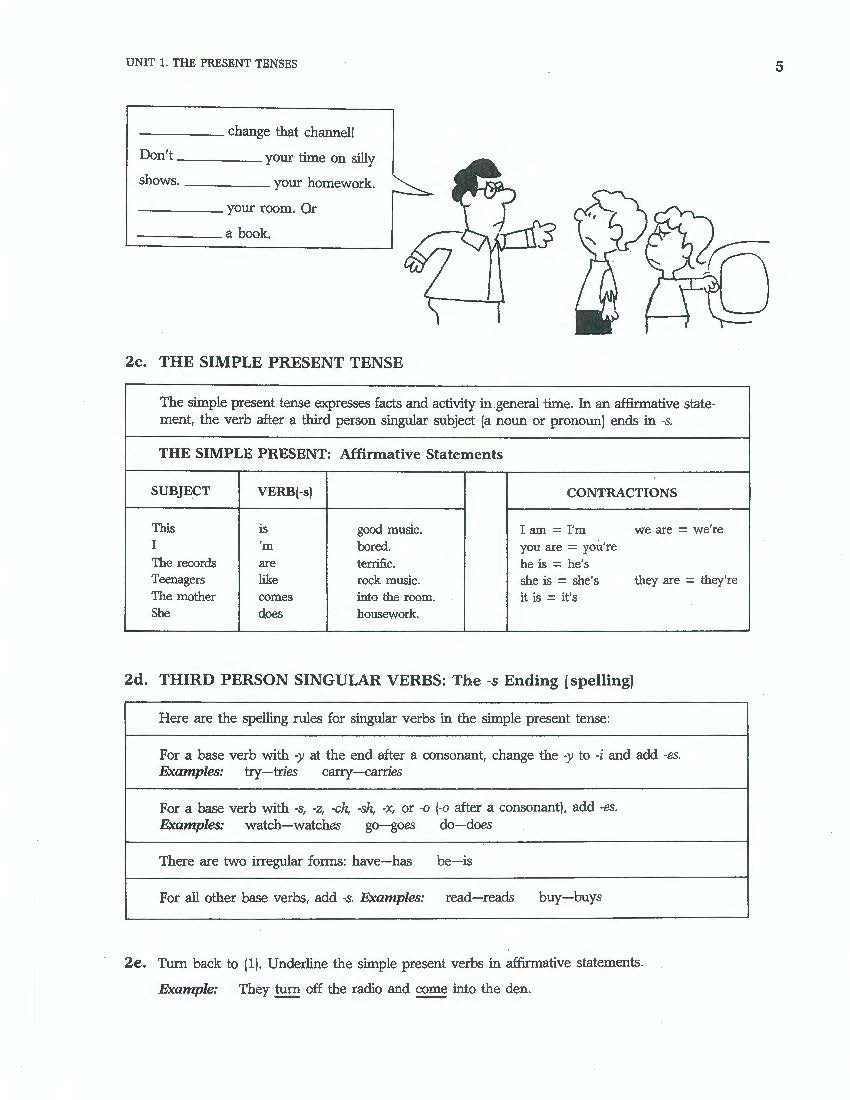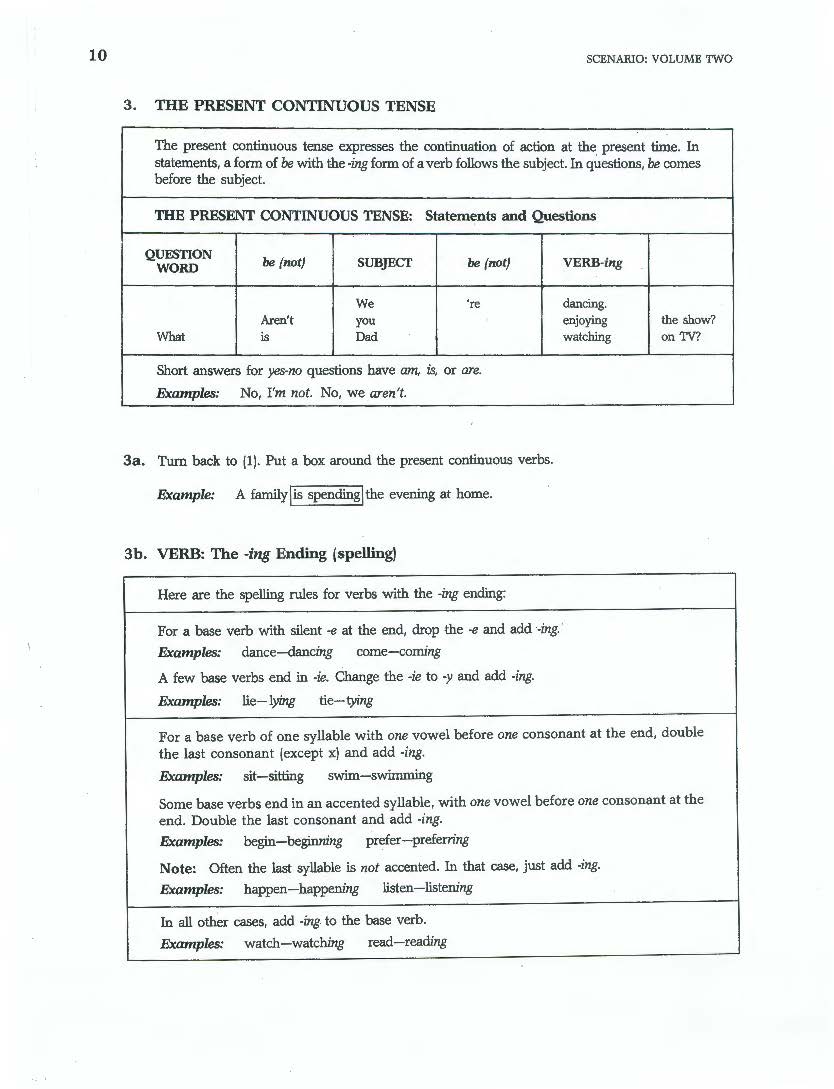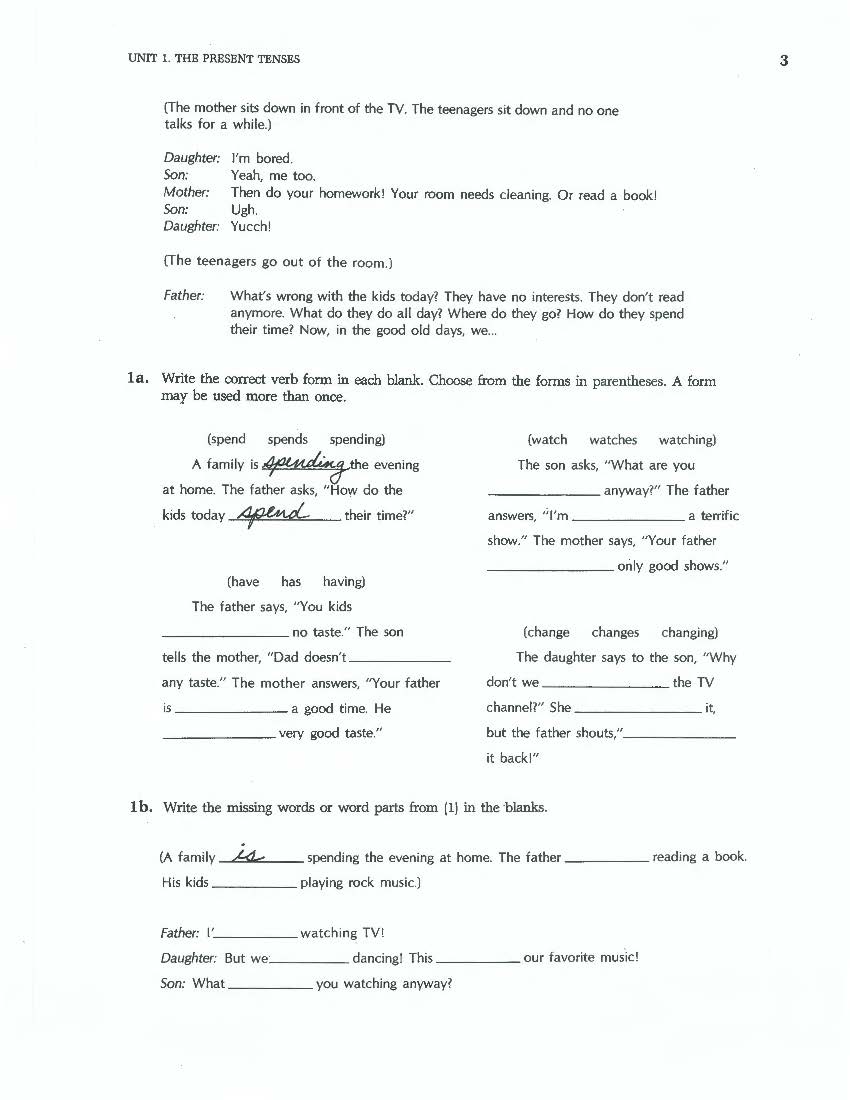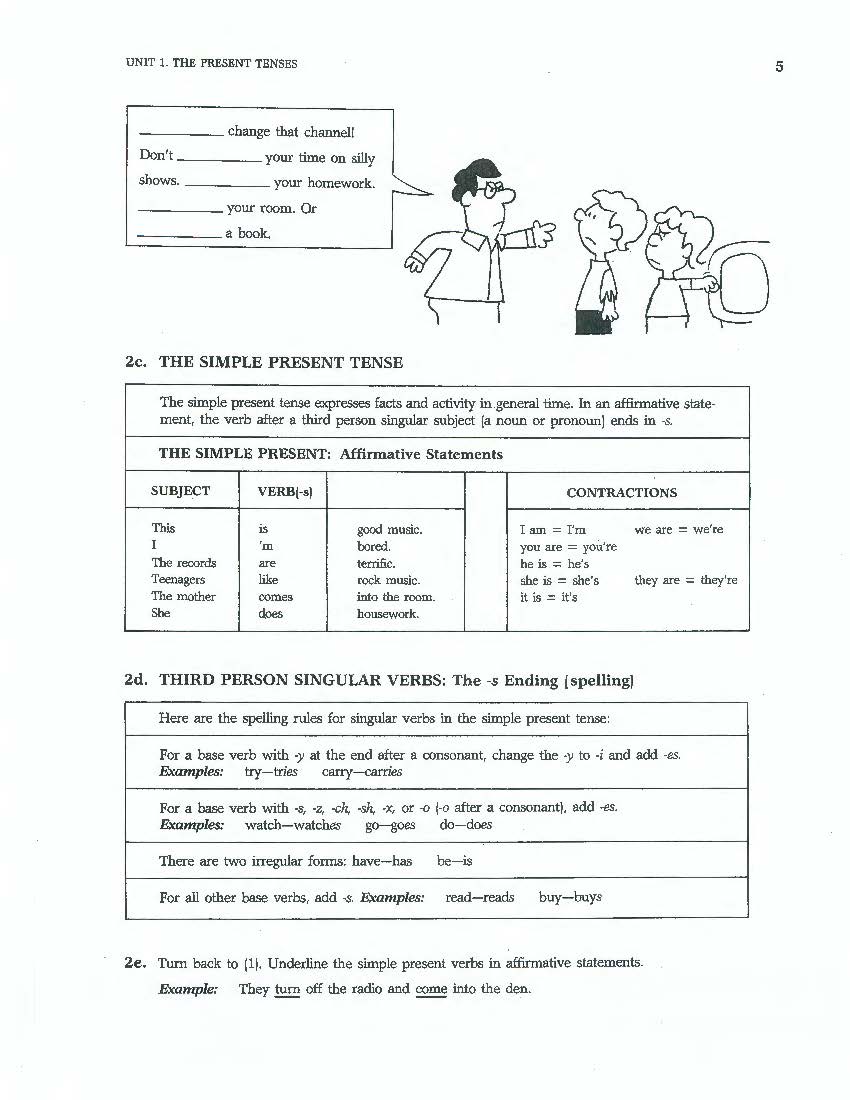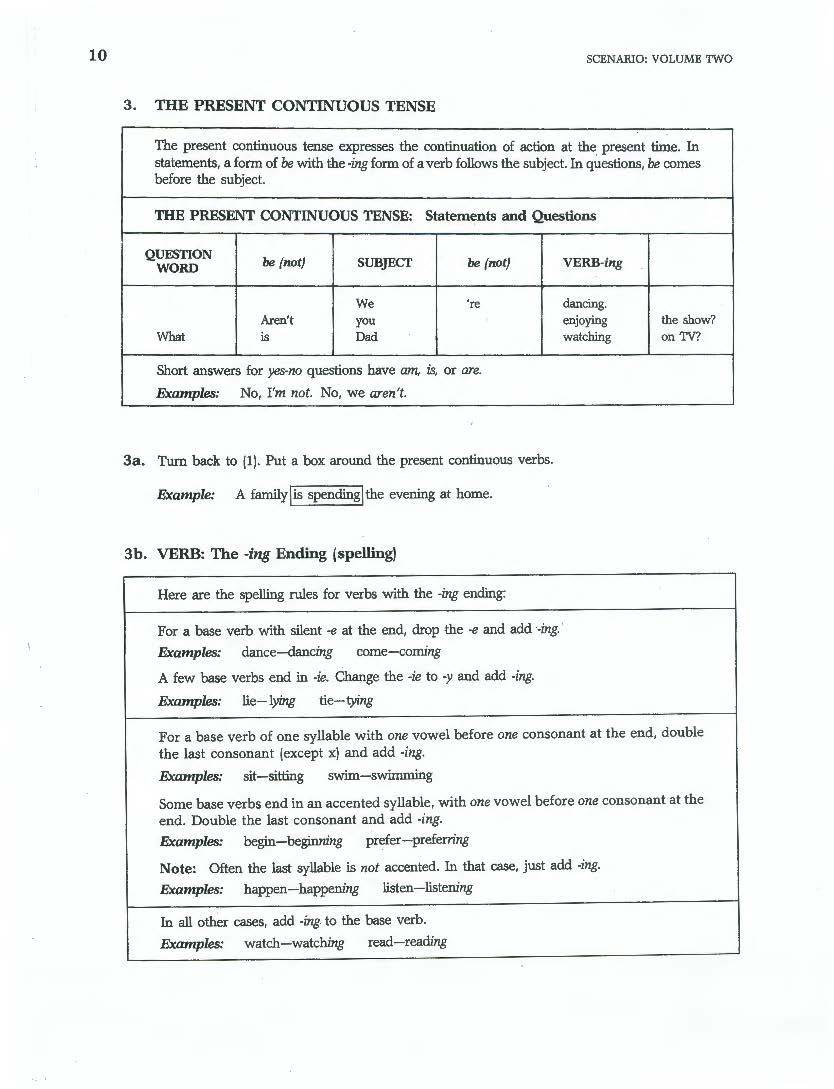1
/
of
4
Work/Life English
D-04.13 Start Out (Again) with Review & Comparison of Present-Time Verb Phrasing
D-04.13 Start Out (Again) with Review & Comparison of Present-Time Verb Phrasing
Regular price
$6.00 USD
Regular price
Sale price
$6.00 USD
Unit price
/
per
Unit 1 (The Present Tenses: “The Generation Gap”) of the Original Scenario, English Grammar in Context, Volume Two, pages 2-25
24 pages
Who It’s For: (Self) Teachers of Intermediate & Beyond Language Learners
Why It’s Useful: Beyond attempts to study English from its onset, teachers and learners may like to revisit present-verb forms—the Imperative, the Simple Present, the Present Continuous—together and in contrast with one another. Here’s a classic, venerable black-and-white progression of a Presentation (its Scenario = “Generation Gap.”) to Comprehension to Boxed Explanations to Exercises (including Spelling). Then in the context of considering whether or how family members of different age groups (tend to / might / ought to) relate to one another, text users will prove their grammatical mettle in multi-graded Putting It Together, Talking It Over, and Writing It Down Activities.
What You’ll Do:
[1] With others, have the four-person (family) conversation on page 2-3. (Let listeners/readers “get and explain the joke.”) (Have learners) Identify sentence subjects + present verbs with or without auxiliaries + –(e)s or –ing endings. Together or individually, complete and check Comprehension Exercises 1a to 1c on pages 3-4.
[2] In ways that correspond to learners’ abilities and goals, go over all the Explanations & Exercises 2(a-m), 3(a-d), 4(a), 5 (a-f), 6 (a-c), and 7 (a-c) that fill the Chapter. In logical linear order, these cover “Imperative Verbs”; “the Simple-Present Tense—Affirmative Statements + “3rd Person Singular -(e)s Endings”; “the Simple Present—Negative Statements & Questions”; “the Present Continuous Tense with “the –ing Ending + Time Expressions”; “the Present Tenses: There + BE”; “the Simple Present vs. the Present Continuous—with(out) Expressions of Frequency”; “Non-Action Verbs (vs. Action Verbs)’; “the Present Tenses—Summary.
[3] It may or may not come naturally by now to incorporate the (fine points of) the grammar in a sequence of (controlled to expressive) steps designed to connect mechanics or rules to real-life communication about a relevant but ever-changing Present (Relationships among the Generations). So learn, do, and benefit from whatever comes naturally.
Couldn't load pickup availability
